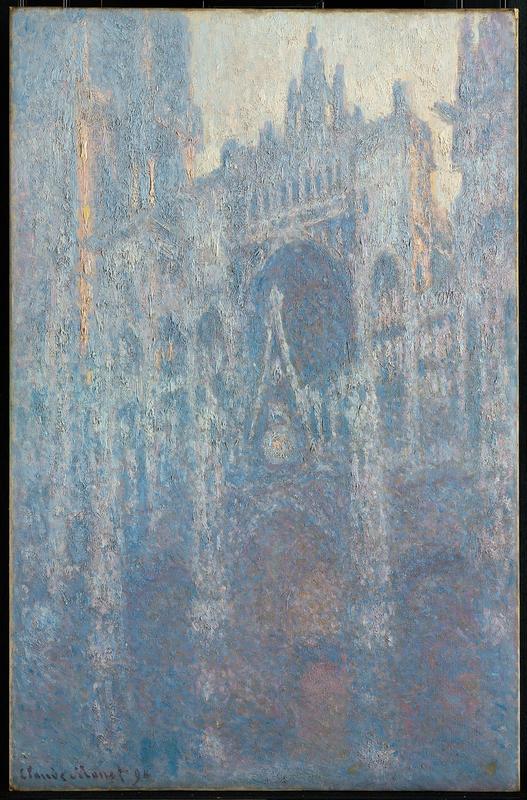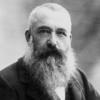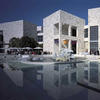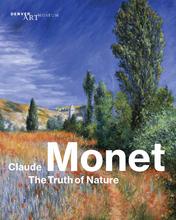More about The Portal of Rouen Cathedral in Morning Light
- All
- Info
- Shop

Sr. Contributor
After pretty much inventing the movement that we’ve come to know as Impressionism, Monet was on a roll and couldn’t be stopped.
Monet liked to paint what he was experiencing in the here and now (hence, his paintings being “impressions” of particular moments). Along with many other artists of the time, he also liked Japanese woodblock prints, which were like really intricate stamps and were usually made in series because they were easily reproducible. Artists began to discover these types of prints, which only recently had been made available to the rest of the world after Commodore Matthew Perry went America all over Japan’s ass and forced Japan to begin trading with the West again after more than two centuries of virtual isolation. Japanese woodblock prints were plentiful in Europe by the late-nineteenth century, and it is rumored that Monet first happened upon this amazing new art form as wrapping paper in a spice shop in Holland.
In the 1890s, Monet found a way to marry his dual interests in the ever-changing nature of reality and woodblock prints and he was inspired to cook up his own method of working in series. Monet discovered that, in paint, he could meticulously record the ways in which light and weather, according to the time of day and angle from which something is viewed, changed the experience of an otherwise static object. He painted haystacks, poplar trees, and Rouen Cathedral in Normandy, France, over and over and over again to show how different these objects and places could look depending on when and how he was looking at them.
If you’ve ever smoked the jazz cabbage with a few friends, you’ve probably had some pretty deep thoughts like, “What if the blue that I see is totally different than the blue that you see?” Essentially, Monet is proposing the same, high-ass questions about reality and perception with these works of art. What if things like haystacks, poplar trees, and cathedrals don’t actually always look the same because people can have totally unique experiences of these things?
If walls could talk, Rouen Cathedral probably would’ve asked Monet, “Why you so obsessed with me?” Monet produced over thirty versions of this single view of the cathedral! Monet set up shop and worked from the second-floor windows of various stores across the street from Rouen Cathedral and, like the truly mad and obsessive man he was, Monet worked on various canvases at the same time to ensure that he was capturing the essence of each, individual moment on these canvases. As promised, each of these paintings looks totally different. The cool blues of the hazy, morning light in the Getty’s version are totally unique from the bright, afternoon light that bathes the cathedral in The Met’s version. With this series, Monet proved that the subjectivity of experience could impact even the most permanent and seemingly unchangeable objects. #Deep.
Sources
- Auricchio, Laura. “Claude Monet (1840-1926).” In Heilbrunn Timeline of Art History. The Metropolitan Museum of Art. October 2004. http://www.metmuseum.org/toah/hd/cmon/hd_cmon.htm. Accessed February 13, 2017.
- Columbia University. “Commodore Perry and Japan (1853-1854).” Asia for Educators. 2009. http://afe.easia.columbia.edu/special/japan_1750_perry.htm. Accessed February 13, 2017.
- Ives, Colta. “Japonisme.” In Heilbrunn Timeline of Art History. The Metropolitan Museum of Art. October 2004. http://www.metmuseum.org/toah/hd/jpon/hd_jpon.htm. Accessed February 13, 2017.
- Samu, Margaret. “Impressionism: Art and Modernity.” In Heilbrunn Timeline of Art History. The Metropolitan Museum of Art. October 2004. http://www.metmuseum.org/toah/hd/imml/hd_imml.htm, Accessed February 13, 2017.
- The J. Paul Getty Museum. “The Portal of Rouen Cathedral in Morning Light.” The J. Paul Getty Trust. http://www.getty.edu/art/collection/objects/131471/claude-monet-the-por…. Accessed February 13, 2017.













